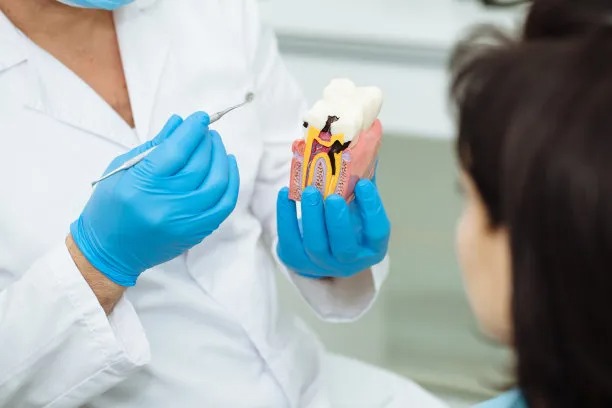Essential Guidelines and Precautions to Ensure Successful Root Canal Treatment and Patient Safety
Summary: Root canal treatment is an essential dental procedure aimed at preserving a tooth that has become infected or severely damaged. To ensure the success of this treatment and guarantee patient safety, several critical guidelines and precautions must be established. This article delves into four significant aspects: proper patient assessment and diagnosis, effective procedural techniques, post-treatment care, and maintaining a sterile environment. Each section highlights essential points that align with best practices in endodontics, allowing dentists to achieve optimal treatment outcomes while keeping patient concern at the forefront.
1. Proper Patient Assessment and Diagnosis

Before starting a root canal procedure, a comprehensive patient assessment must be conducted. This involves understanding the patients medical history, current health condition, and any medications they may be taking. An accurate diagnosis can help determine whether a root canal is truly necessary or if other treatment options might be more appropriate.
Advanced imaging techniques, such as X-rays or 3D cone beam computed tomography (CBCT), can provide detailed insights into the tooths anatomy and the extent of any infection. Dentists should evaluate these images carefully to identify any complexities, such as additional root canals or anomalies that could complicate the treatment.
Communication with the patient is also crucial during this stage. Dentists should explain the root canal procedure, potential risks, and the importance of timely intervention. Having the patients informed consent before proceeding is an ethical and legal obligation that should not be overlooked.
2. Effective Procedural Techniques
Throughout the root canal procedure, following established techniques is vital to achieve successful outcomes. The first step involves isolating the tooth using a rubber dam, which prevents saliva from contaminating the treatment area and enhances visibility. This isolation is critical for maintaining a clean working environment and ensuring patient safety.
Next, the dentist carefully accesses the pulp chamber and removes the infected or necrotic pulp using precision instruments. Using rotary endodontic tools can improve efficiency and reduce procedural time. Dentists must also take care to clean and shape the canal system thoroughly to eliminate any remaining bacteria.
Finally, proper filling and sealing of the canal are essential to prevent future infections. Biocompatible materials should be used, and a well-fitted crown should be placed to restore the tooths functionality and aesthetics. Adhering to these steps ensures that the root canal treatment is comprehensive and effective.
3. Post-Treatment Care and Follow-Up
After the root canal procedure, post-treatment care plays a significant role in the healing process. Dentists should provide clear instructions about pain management, activity restrictions, and dietary recommendations post-procedure. Patients should understand the importance of taking prescribed medications and following up if they experience unusual pain or swelling.
Regular follow-up appointments are crucial for monitoring the healing process and ensuring the success of the treatment. During these visits, the dentist can evaluate the treated area and address any concerns that the patient may have, reinforcing the importance of open communication.
Patients should also be educated on oral hygiene practices to maintain their dental health. Proper brushing and flossing techniques can help prevent future infections and promote overall oral health, enhancing the longevity of the treated tooth.
4. Maintaining a Sterile Environment
Infection control is critical before, during, and after the root canal procedure. Adhering to stringent sterilization protocols helps minimize the risk of cross-contamination and safeguards patient safety. All instruments should be properly sterilized, and personal protective equipment (PPE) should be worn by dental staff to create a barrier against potential infections.
Additionally, the dental operatory should be regularly disinfected and maintained, ensuring a clean and safe environment for both the patient and the dental team. Limiting the number of individuals present during the procedure can also help maintain a controlled environment and reduce the risk of infection.
Efforts to maintain a sterile environment should also extend to the materials used in the procedure. Ensuring that all obturation and restorative materials are of high quality and free from contaminants is crucial for the long-term success of root canal treatments.
Summary:
In summary, successful root canal treatments hinge on a comprehensive approach that includes thorough patient assessment, effective procedural techniques, diligent post-treatment care, and strict adherence to sterilization protocols. By following these essential guidelines and precautions, dentists can ensure that patients receive optimal care while prioritizing their safety and well-being.
This article is compiled by Vickong Dental and the content is for reference only.



